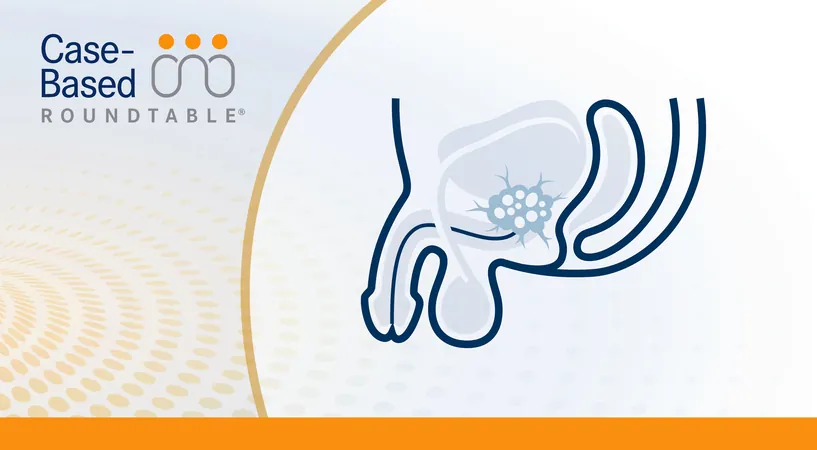
Shocking Study Reveals Deep-Seated Stigma in Healthcare for Substance Use Disorders
2025-07-24
Author: Jia
Stigma Exposed: A National Wake-Up Call
A groundbreaking study from Columbia University’s Mailman School of Public Health unveils the stark reality: stigma against individuals with substance use disorders (SUD) is rampant among U.S. healthcare providers, particularly influenced by the type of substance involved. Published in the journal Addiction, this research shines a light on a critical barrier to effective care.
A Comparative Analysis Like No Other
This pivotal research is the first of its kind to delve into provider attitudes toward opioid use disorder (OUD), stimulant dependence, and alcohol use disorder (AUD), juxtaposed against chronic but less stigmatized conditions like depression, HIV, and Type II diabetes. Moreover, it examines how stigma impacts routine practices like screening for SUD, referrals, and treatment delivery.
"Despite progress in expanding access to treatment, the stigma persists, often woven into the very fabric of clinical encounters," warns Carrigan Parish, DMD, Ph.D., a co-author and assistant professor at Columbia.
Emergency Rooms: A Critical Point of Care
The findings reveal an alarming hesitance among providers, especially in emergency departments, which often act as the first—and sometimes the only—access point to care for those with SUD. This hesitance leads to countless missed opportunities for effective intervention.
Diving into the Study's Details
Conducted between October 2020 and October 2022, the study surveyed 2,308 healthcare providers, including primary care and emergency medicine professionals, as well as dentists. Participants evaluated standardized stigma statements and reported their screening and treatment practices across various conditions.
Key revelations include:
Staggering Stigma Scores
- Stimulant use disorders topped the stigma scale at 36.3 points, closely followed by OUD at 35.6 and AUD at 32. - In contrast, stigma around depression (26.2), HIV (25.8), and Type II diabetes (23.2) were markedly lower, revealing an unsettling double standard in care.
Provider Reluctance: A Widespread Issue
More than 30% of participants indicated a preference to avoid treating patients with OUD or stimulant use disorders, a staggering contrast to just 2% for Type II diabetes. Emergency medicine physicians showed the highest stigma yet were also notably engaged in treatment, with nearly 30% providing drug use treatment.
Underlying Barriers to Care
The study uncovered systemic barriers that perpetuate stigma, such as time limitations, insufficient training, and a lack of resources for referrals. "Healthcare providers frequently feel ill-equipped to handle SUD cases, especially within the demanding environment of primary care," noted senior author Lisa R. Metsch, highlighting the urgent need for change.
Hope for Change: Recognizing the Issue
Despite the concerning findings, a majority of healthcare professionals agreed that insurance should offer equal coverage for SUD as with other health conditions. Even dentists, although traditionally distanced from SUD treatment, play a critical role in identifying oral signs and guiding patients to the necessary support.
Toward a Better Future in Healthcare
Looking ahead, renewed awareness of these variances in treatment and provider responses is essential. By tailoring interventions based on specialty, setting, and substance type, the healthcare system can foster a more compassionate and effective approach toward those battling substance use disorders.



 Brasil (PT)
Brasil (PT)
 Canada (EN)
Canada (EN)
 Chile (ES)
Chile (ES)
 Česko (CS)
Česko (CS)
 대한민국 (KO)
대한민국 (KO)
 España (ES)
España (ES)
 France (FR)
France (FR)
 Hong Kong (EN)
Hong Kong (EN)
 Italia (IT)
Italia (IT)
 日本 (JA)
日本 (JA)
 Magyarország (HU)
Magyarország (HU)
 Norge (NO)
Norge (NO)
 Polska (PL)
Polska (PL)
 Schweiz (DE)
Schweiz (DE)
 Singapore (EN)
Singapore (EN)
 Sverige (SV)
Sverige (SV)
 Suomi (FI)
Suomi (FI)
 Türkiye (TR)
Türkiye (TR)
 الإمارات العربية المتحدة (AR)
الإمارات العربية المتحدة (AR)